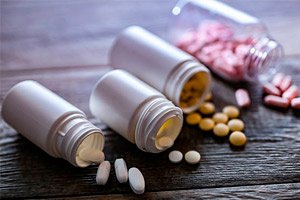
All iLive content is medically reviewed or fact checked to ensure as much factual accuracy as possible.
We have strict sourcing guidelines and only link to reputable media sites, academic research institutions and, whenever possible, medically peer reviewed studies. Note that the numbers in parentheses ([1], [2], etc.) are clickable links to these studies.
If you feel that any of our content is inaccurate, out-of-date, or otherwise questionable, please select it and press Ctrl + Enter.
"Isotope passport" for tablets: scientists have learned to distinguish real drugs from fakes by invisible marks
Last reviewed: 09.08.2025

A team of chemists has shown that each tablet has its own “biometric” trace — not a fingerprint, but an isotopic signature. By measuring the proportions of stable isotopes of hydrogen, carbon, and oxygen (δ²H, δ¹³C, δ¹⁸O) in finished ibuprofen preparations, the researchers were able to confidently distinguish between products from different manufacturers and even individual batches. Such express screening directly from the tablet could become a new tool for combating counterfeit drugs and monitoring the quality of medicines. The study was published in the journal Molecular Pharmaceutics.
What did you do?
The authors studied 27 commercial ibuprofen preparations from six countries and compared them with the isotopic profiles of 27 common pharmaceutical excipients. The analysis was performed on a tiny sample size — on the order of hundreds of micrograms — without complex sample preparation: the tablet was crushed and fed into a thermal conversion/elemental analysis coupled with an isotope mass spectrometer (TC/EA-IRMS). This approach allows for a quick and reproducible “isotopic portrait” of the finished form, not just the starting material.
What did you find?
- Within one batch, the spread of isotopic values is minimal, but between different brands and batches it is noticeable.
- The most “quiet” and stable marker was δ¹³C; in combination with δ²H and δ¹⁸O it provides a multidimensional, well-distinguished “passport” of the drug.
- Both the active substance and the excipients contribute to the signature: the origin of the raw material, the characteristics of synthesis, purification and drying leave isotopic traces that are difficult to forge.
Why is this necessary?
Counterfeit and substandard drugs are a global problem. Isotope certification adds another level of protection to conventional tests: it does not depend on labels and accompanying documents and works directly on the tablet with minimal sample preparation. Regulators and manufacturers will be able to:
- quickly check suspicious batches;
- trace supply chains (from raw materials to the pharmacy);
- create reference databases of “isotope passports” for key drugs.
What do the authors say?
According to the study’s lead author Else Holmfred, the main achievement is the possibility of reliable analysis based on microgram samples of finished forms: this makes the method convenient for routine screening. Co-author Paige Chamberlain emphasizes that isotopic ratios work as natural markers of origin and technology: “We see differences in the level necessary for real supply chain control.” And Stefan Sturup notes that the combination of δ¹³C with δ²H and δ¹⁸O provides a “passport” suitable for the practice of combating counterfeits.
— Else Holmfred, postdoc at the University of Copenhagen and Stanford; lead author:
“Every drug has a unique chemical fingerprint that can be used to trace back even to a specific manufacturing plant.” She says this analysis can help prove the origin of a batch — for example, if discarded pills were stolen and repackaged. Holmfred adds that with a suitable lab, “analyzing 50 samples takes about 24 hours.”
— Stefan Stürup, Associate Professor of Pharmacy, co-author:
He explains that stable isotopes of carbon, hydrogen and oxygen in the ingredients of medicines reflect where the original plant grew, what kind of water it “drank” and what type of photosynthesis it used. “That’s why isotopes cannot be faked,” Stürup emphasizes.
Limitations and Next Steps
The method does not replace pharmacopoeial tests (content of active substance, impurities, dissolution), but complements them. For widespread use, the following is needed:
- reference libraries of isotopic profiles by brands and batches;
- standardization of protocols between laboratories;
- assessment of “gray areas” where signatures partially overlap (e.g. with the same raw materials and similar processes).
Still, the work demonstrates something important: every pill carries a history of its origins, and that history can be read. If such “isotope passports” become part of regulatory practice, drug authenticity testing will become faster, cheaper, and more reliable—and therefore safer for patients.
